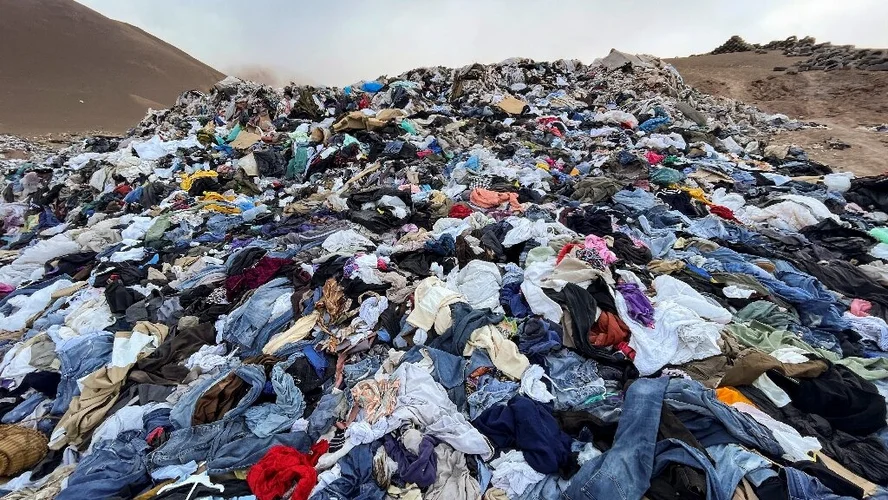Someone is always paying for your cheap clothing
Business and Human Rights Resource Centre
This mountain of discarded fast fashion clothing is located in Chile.
November 18, 2022
As teenagers, scavenging the mall for the cheapest clothing is something all of us do in attempts to salvage every last crumb of money from our minimum wage jobs. However, this seemingly harmless act has a drastic effect on our environment, as well as the labor force.
These low prices come at a huge cost; the fast fashion industry is a major contributor to carbon emissions, water pollution, textile waste, human trafficking, and sweatshops. Fast fashion can be defined as the mass production of trendy clothing that quickly goes out of style, and is therefore disposed of rapidly. Since so much textile is being discarded simultaneously, it is carelessly tossed into landfills, rather than recycled or donated. Big corporations do not want people to find their merchandise at second hand stores, out of fear that it will blemish their reputation.
Fast fashion industries account for 10% of global carbon emissions per year due transportation between factories and when the products are discarded in landfills or burned. In addition, the production of textiles releases immense amounts of carbon dioxide due to the petrochemical origins of the material.
The synthetic fabrics of these materials also contain microplastics that are flushed into the wastewater systems, eventually ending up in the ocean. These plastics not only end up in the stomachs of marine animals, but also our stomachs, due to the consumption of seafood.
The impact of fast fashion on the environment is obvious, but the impact on humans is not to be forgotten. Fast fashion industries often turn to sweatshops for cheap labor. These consist of unsafe working conditions for a very small paycheck, despite the long hours. The average sweatshop worker in Bangladesh earns merely 2 dollars per day (“Fast Fashion and Labor Trafficking”)! Children can also be employed in foreign countries, violating basic human rights. Of the children involved in child labor, about 170 million are hired by textile factories, breaking their backs to bring you the latest trends.
Human trafficking, the forced exploitation of a person for sexual or labor purposes, is also a huge issue within the fast fashion industry. Victims of human trafficking are threatened to do work involuntarily, under formidable and unfair conditions. Not to mention, they are often lied to about the sum of their paychecks. Safety measures are often violated by companies in order to cut costs, creating a dangerous working environment for victims.
Overall, I know it is great to be money conscious, but there are so many other, more urgent, concerns that can only be resolved through staying informed and making ethical choices
DiLonardo, Mary Jo. “What Is Fast Fashion-and Why Is It a Problem?” Treehugger, Treehugger, 5 Oct. 2022, https://www.treehugger.com/fast-fashion-environmental-ethical-issues-4869800.
MacDonald, Natalie. “Fast Fashion & Labor Trafficking.” Unbound Global, Unbound Global, 20 Nov. 2020, https://www.unboundnow.org/blog/fast-fashion-amp-labor-trafficking.


